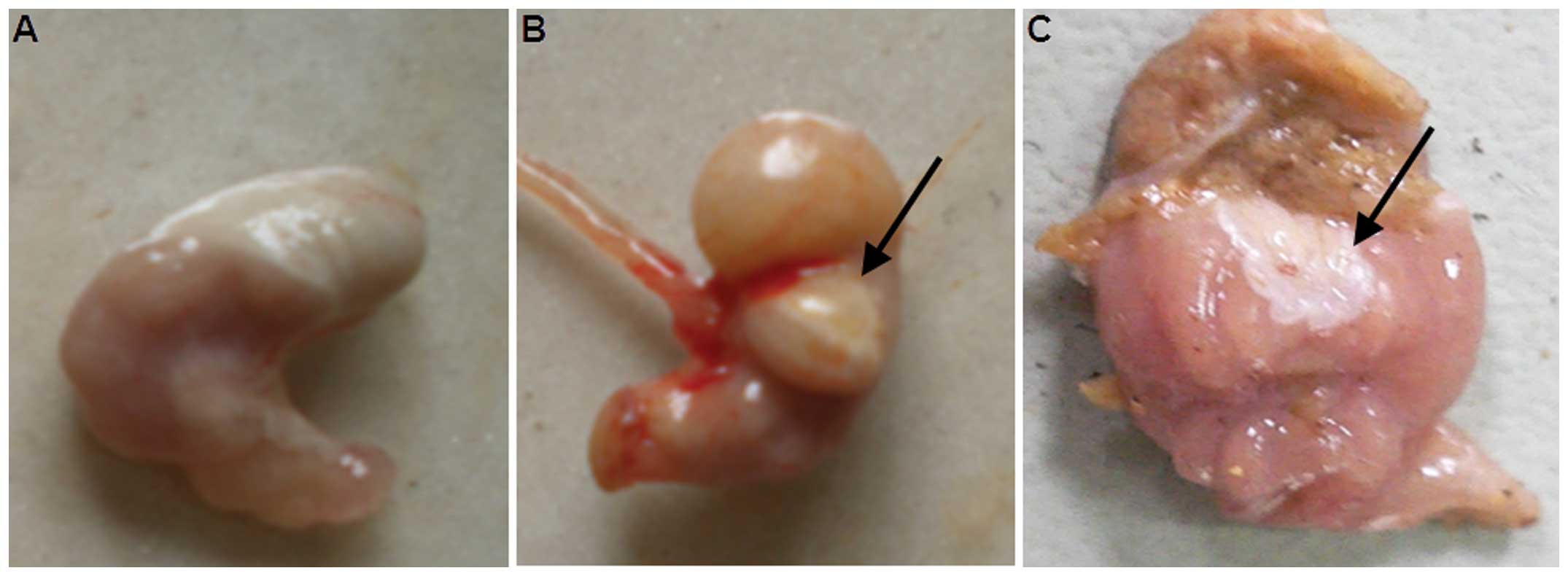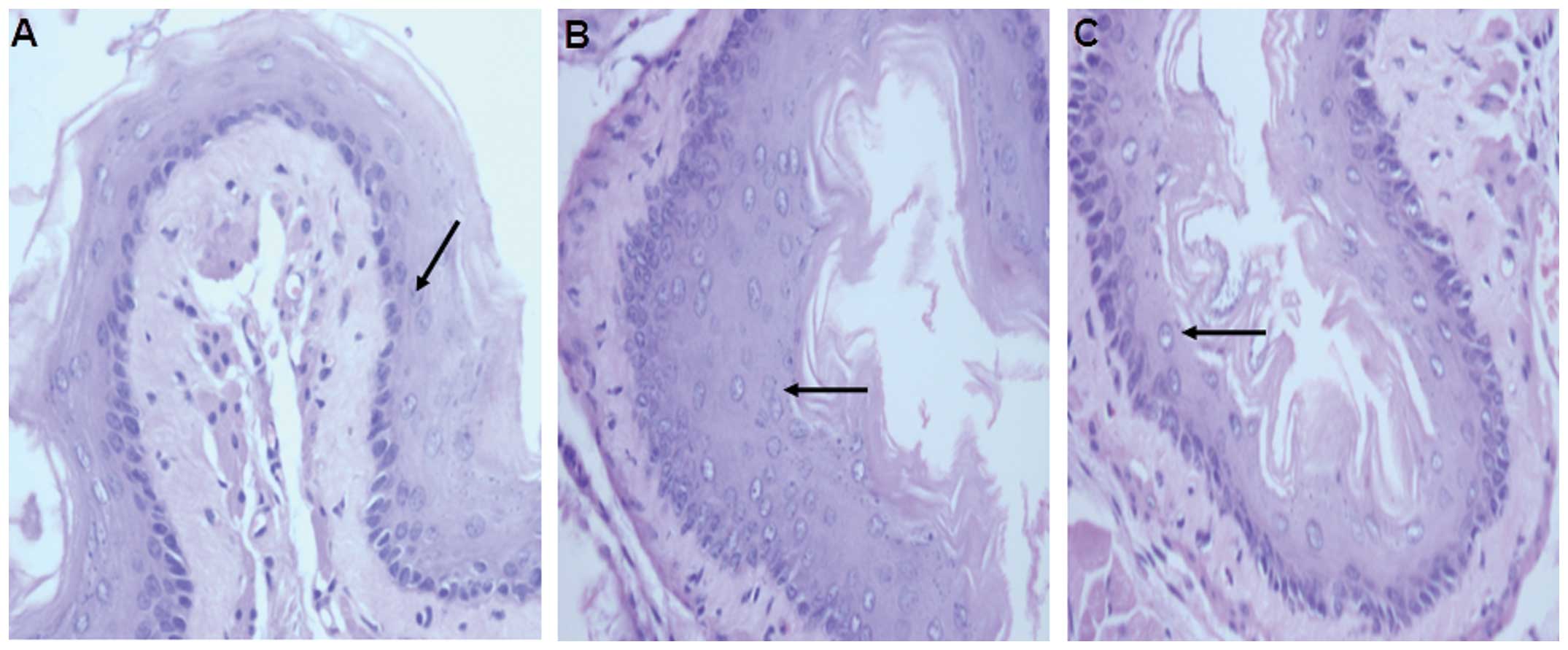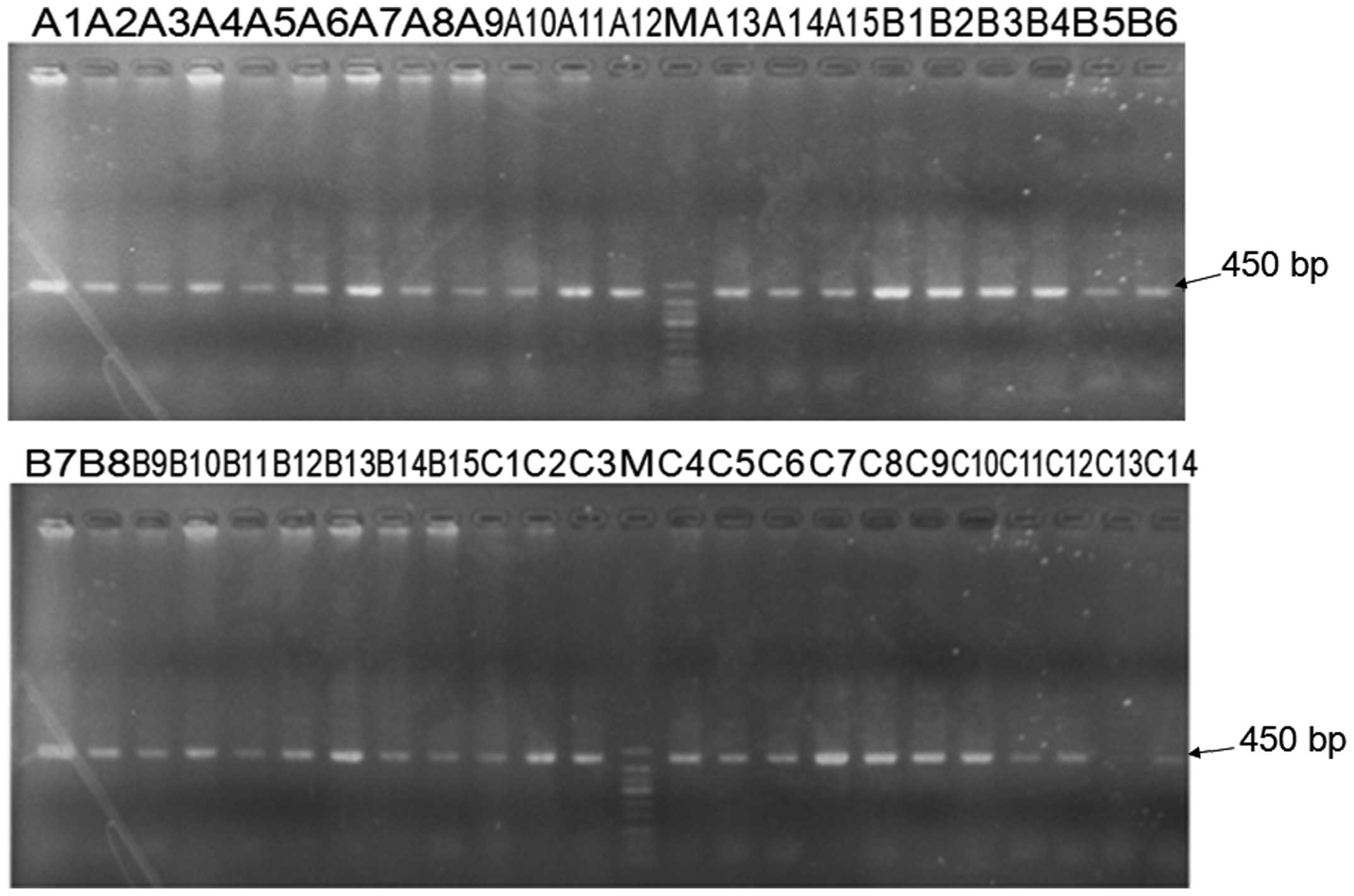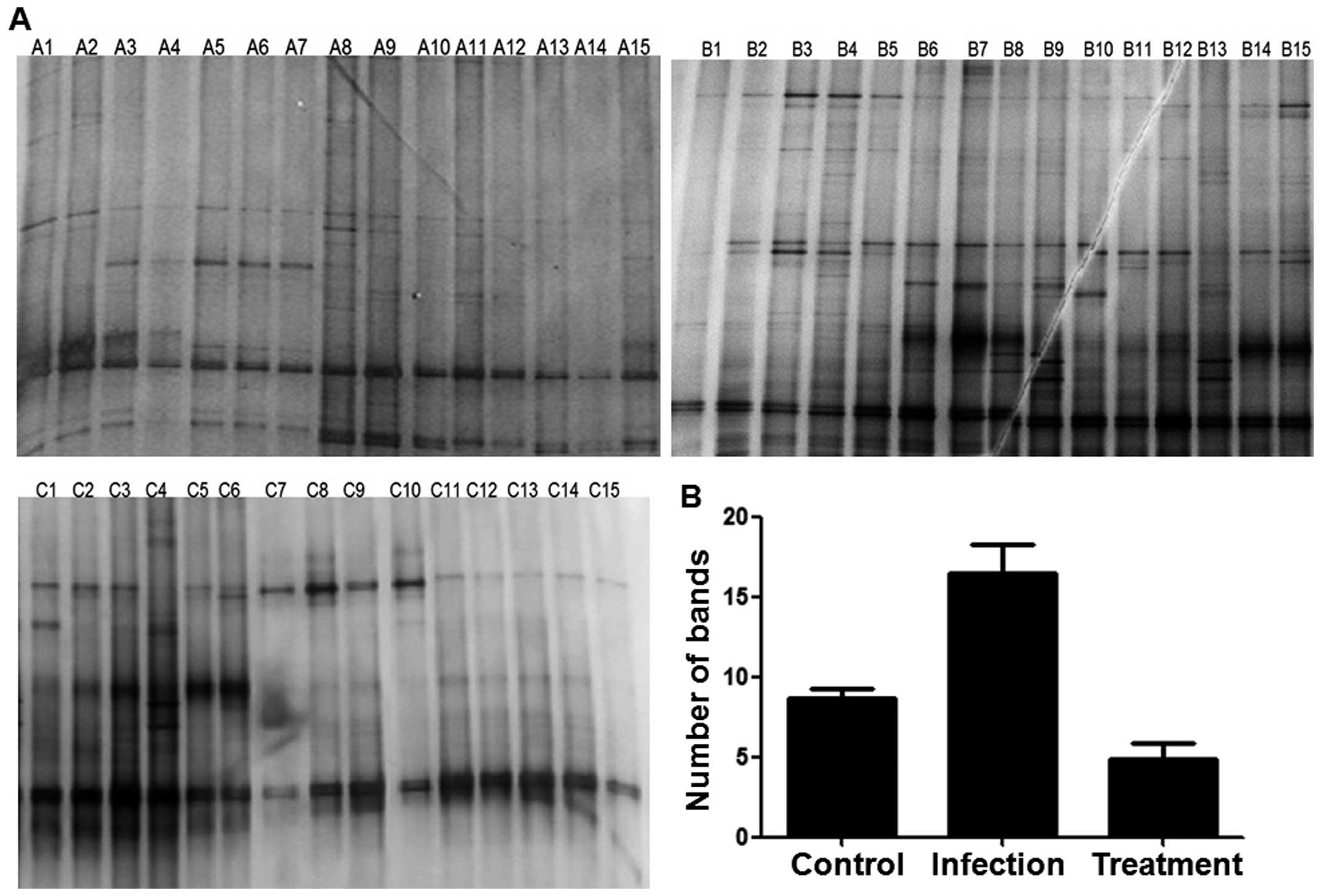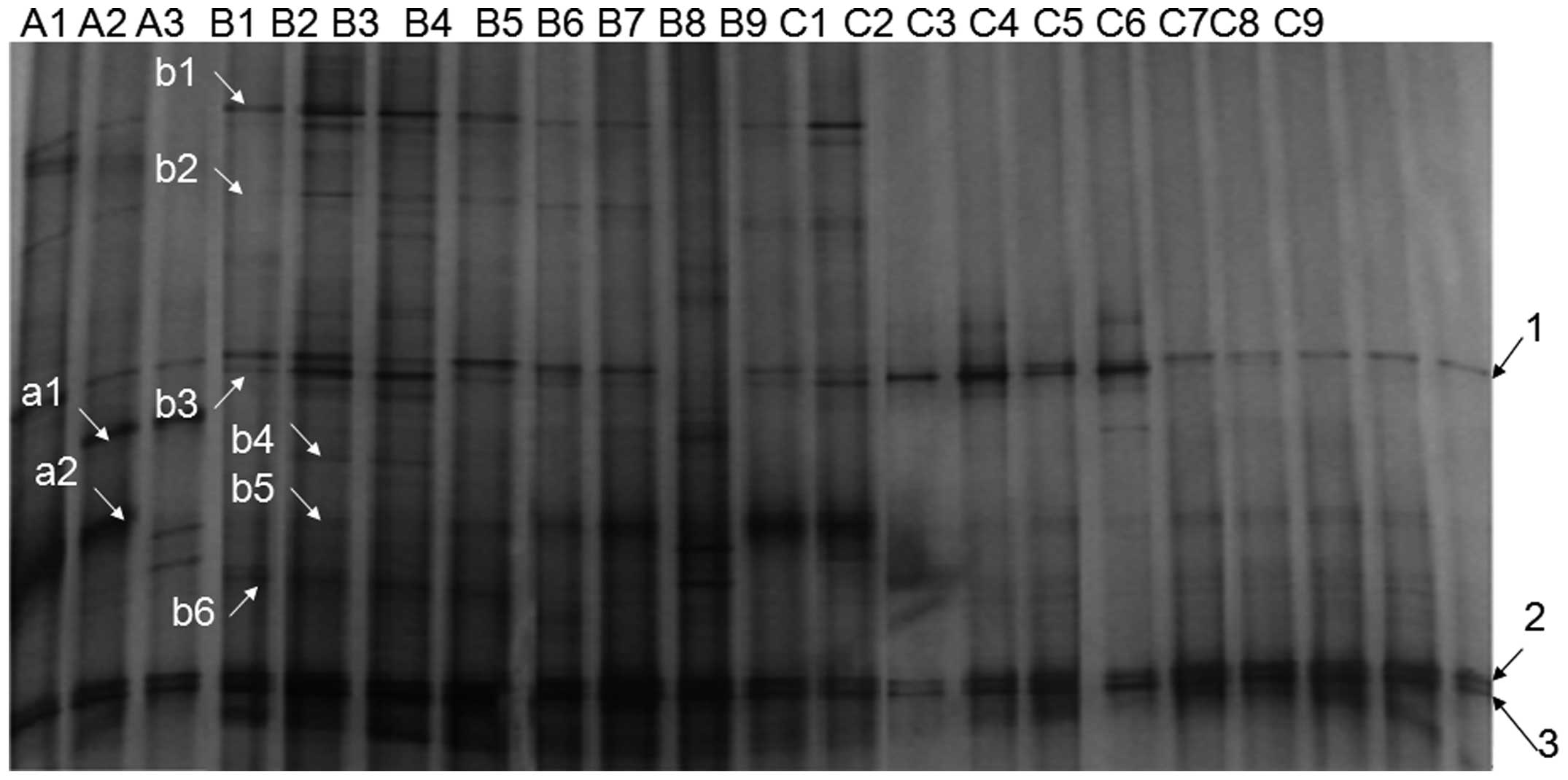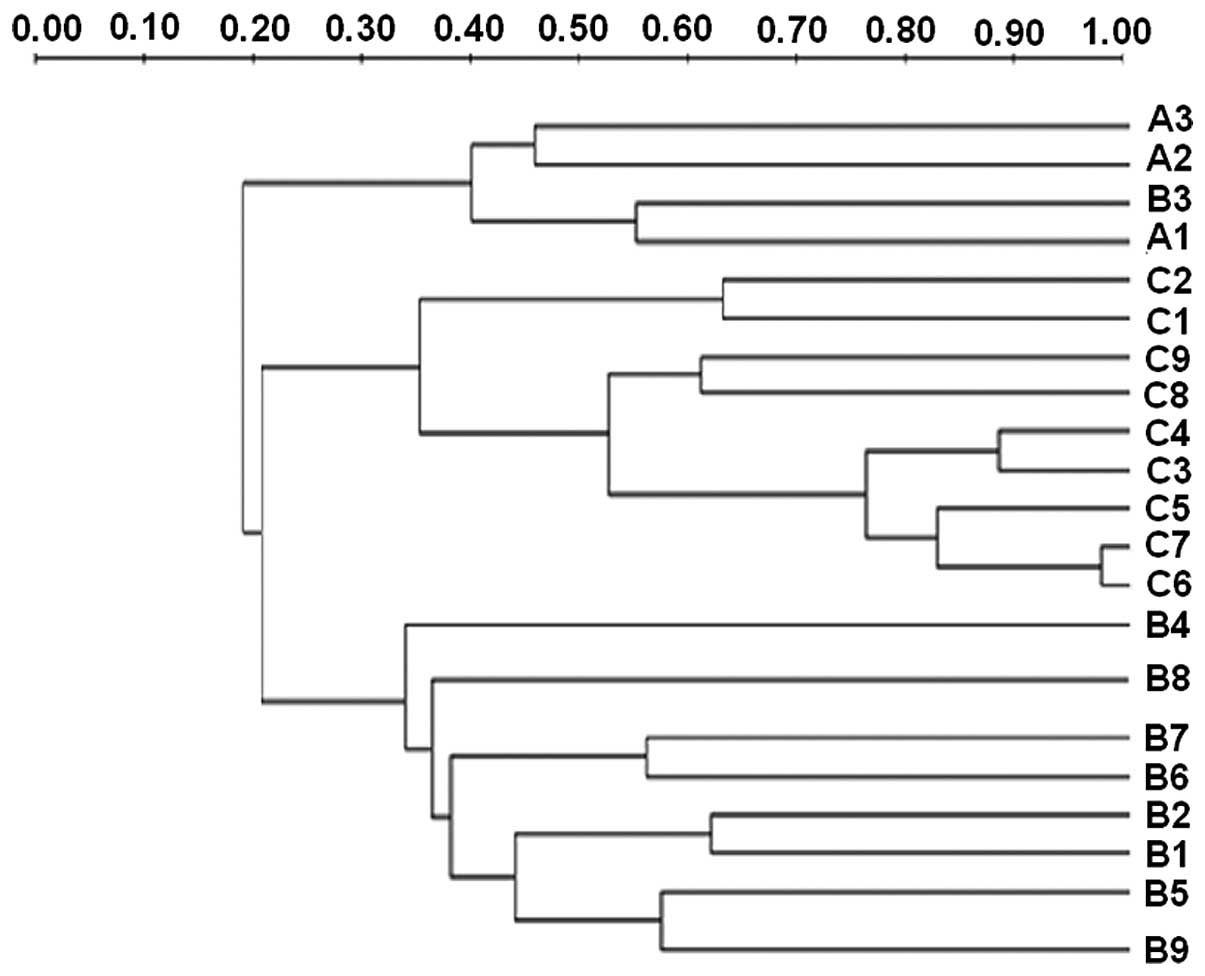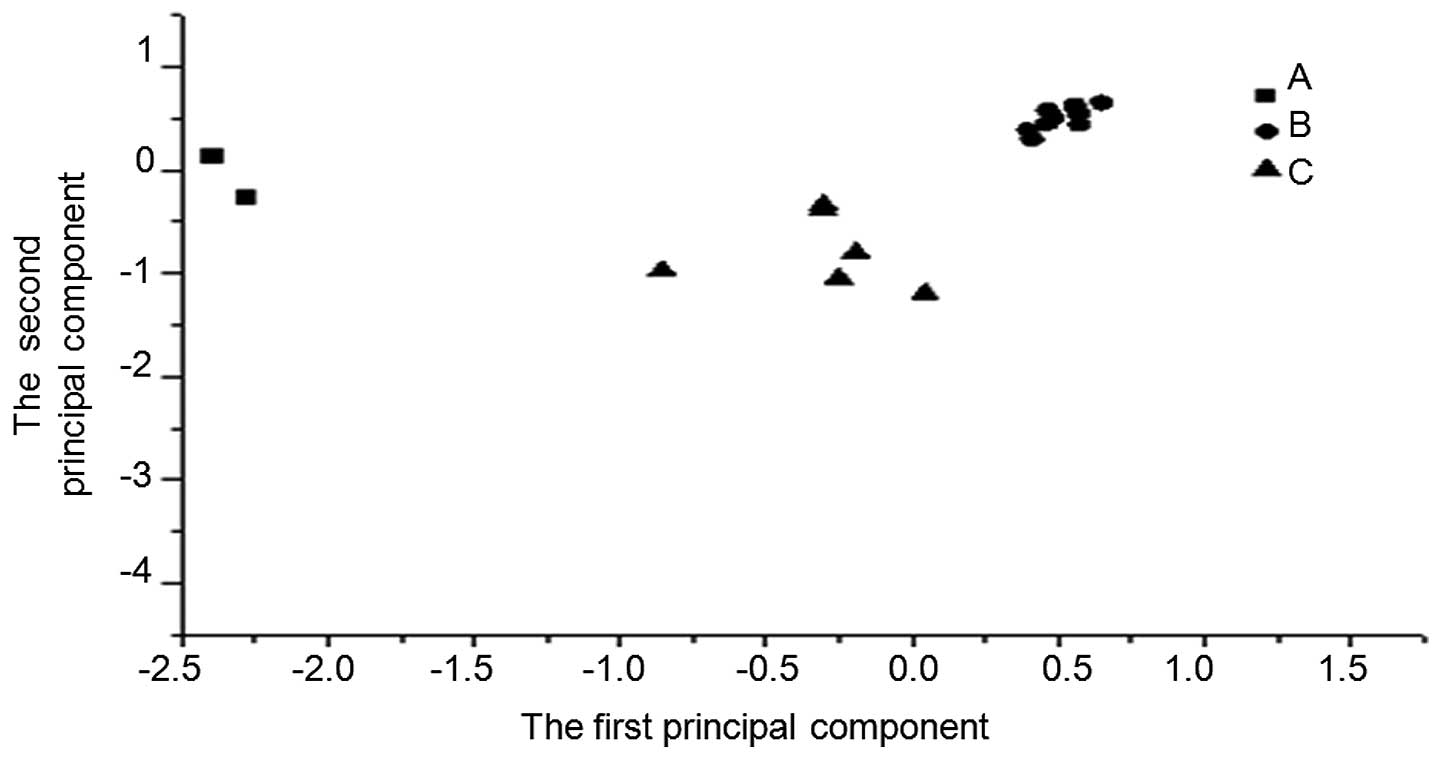|
1
|
Labenz J, Blum AL, Bayerdöffer E, et al:
Curing Helicobacter pylori infection in patients with duodenal
ulcer may provoke reflux esophagitis. Gastroenterology.
112:1442–1447. 1997. View Article : Google Scholar : PubMed/NCBI
|
|
2
|
Hamada H, Haruma K, Mihara M, et al: High
incidence of reflux oesophagitis after eradication therapy for
Helicobacter pylori: impacts of hiatal hernia and corpus gastritis.
Aliment Pharmacol Ther. 14:729–735. 2000. View Article : Google Scholar : PubMed/NCBI
|
|
3
|
Inoue H, Imoto I, Taguchi Y, et al: Reflux
esophagitis after eradication of Helicobacter pylori is associated
with the degree of hiatal hernia. Scand J Gastroenterol.
39:1061–1065. 2004. View Article : Google Scholar : PubMed/NCBI
|
|
4
|
Kawanishi M: Development of reflux
esophagitis following Helicobacter pylori eradication. J
Gastroenterol. 40:1024–1028. 2005. View Article : Google Scholar : PubMed/NCBI
|
|
5
|
Take S, Mizuno M, Ishiki K, et al:
Helicobacter pylori eradication may induce de novo, but transient
and mild, reflux esophagitis: Prospective endoscopic evaluation. J
Gastroenterol Hepatol. 24:107–113. 2009. View Article : Google Scholar
|
|
6
|
Nam SY, Choi IJ, Ryu KH, et al: Effect of
Helicobacter pylori infection and its eradication on reflux
esophagitis and reflux symptoms. Am J Gastroenterol. 105:2153–2162.
2010. View Article : Google Scholar : PubMed/NCBI
|
|
7
|
Abe Y, Koike T, Iijima K, et al:
Esophageal adenocarcinoma developing after eradication of
Helicobacter pylori. Case Rep Gastroenterol. 5:355–360. 2011.
View Article : Google Scholar : PubMed/NCBI
|
|
8
|
Moeller AH and Ochman H: Factors that
drive variation among gut microbial communities. Gut Microbes.
4:403–408. 2013. View Article : Google Scholar : PubMed/NCBI
|
|
9
|
Lozupone CA, Li M, Campbell TB, et al:
Alterations in the gut microbiota associated with HIV-1 infection.
Cell Host Microbe. 14:329–339. 2013. View Article : Google Scholar : PubMed/NCBI
|
|
10
|
Yang L, Lu X, Nossa CW, et al:
Inflammation and intestinal metaplasia of the distal esophagus are
associated with alterations in the microbiome. Gastroenterology.
137:588–597. 2009. View Article : Google Scholar : PubMed/NCBI
|
|
11
|
Hu ZQ and Qing SD: Study on the self-made
rapid urease test strip for detecting Helicobacter pylori.
Chongqing Yi Ke Da Xue Xue Bao. 17:313–315. 1992.
|
|
12
|
Sezikli M, Çetinkaya ZA, Güzelbulut F, et
al: Effects of alpha tocopherol and ascorbic acid on Helicobacter
pylori colonization and the severity of gastric inflammation.
Helicobacter. 17:127–132. 2012. View Article : Google Scholar : PubMed/NCBI
|
|
13
|
Huws SA, Edwards JE, Kim EJ and Scollan
ND: Specificity and sensitivity of eubacterial primers utilized for
molecular profiling of bacteria within complex microbial
ecosystems. J Microbiol Methods. 70:565–569. 2007. View Article : Google Scholar : PubMed/NCBI
|
|
14
|
von Rosenvinge EC, Song Y, White JR, et
al: Immune status, antibiotic medication and pH are associated with
changes in the stomach fluid microbiota. ISME J. 7:1354–1366. 2013.
View Article : Google Scholar : PubMed/NCBI
|
|
15
|
Jiang Y, Gao F, Xu X, et al: Changes in
the composition of the bacterial flora on tray-packaged pork during
chilled storage analyzed by PCR-DGGE and real-time PCR. J Food Sci.
76:M27–M33. 2011. View Article : Google Scholar : PubMed/NCBI
|
|
16
|
Devillard E, Burton JP and Reid G:
Complexity of vaginal microflora as analyzed by PCR denaturing
gradient gel electrophoresis in a patient with recurrent bacterial
vaginosis. Infect Dis Obstet Gynecol. 13:25–31. 2005. View Article : Google Scholar : PubMed/NCBI
|
|
17
|
Chao A: Nonparametric estimation of the
number of classes in a population. Scand J Statist. 11:265–270.
1984.
|
|
18
|
Reid G and Burton J: Use of Lactobacillus
to prevent infection by pathogenic bacteria. Microbes Infect.
4:319–324. 2002. View Article : Google Scholar : PubMed/NCBI
|
|
19
|
Guo G, Tong W, Zou Q, et al: The role of
gene HP0318 in adaptative colonization of Helicobacter pylori. Di
San Jun Yi Da Xue Xue Bao. 29:1006–1009. 2007.(In Chinese).
|
|
20
|
Ley RE, Bäckhed F, Turnbaugh P, et al:
Obesity alters gut microbial ecology. Proc Natl Acad Sci USA.
102:11070–11075. 2005. View Article : Google Scholar : PubMed/NCBI
|
|
21
|
Iwakiri K, Hayashi Y, Kotoyori M, et al:
The minimum pressure of the lower esophageal sphincter, determined
by the rapid pull-through method, is an index of severe reflux
esophagitis. J Gastroenterol. 39:616–620. 2004. View Article : Google Scholar : PubMed/NCBI
|
|
22
|
Sano H, Iwakiri K, Kawami N, Tanaka Y and
Sakamoto C: Mechanisms of Acid reflux and how refluxed Acid extends
proximally in patients with non-erosive reflux disease. Digestion.
90:108–115. 2014. View Article : Google Scholar : PubMed/NCBI
|
|
23
|
Gatenby P and Soon Y: Barrett’s
oesophagus: Evidence from the current meta-analyses. World J
Gastrointest Pathophysiol. 5:178–187. 2014.PubMed/NCBI
|
|
24
|
Fan YP, Chakder S, Gao F and Rattan S:
Inducible and neuronal nitric oxide synthase involvement In
lipopolysaccharide-induced sphincteric dysfunction. Am J Physiol
Gastrointest Liver Physiol. 280:G32–G42. 2001.
|















